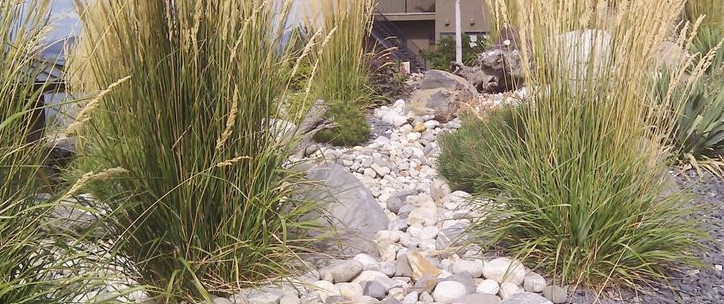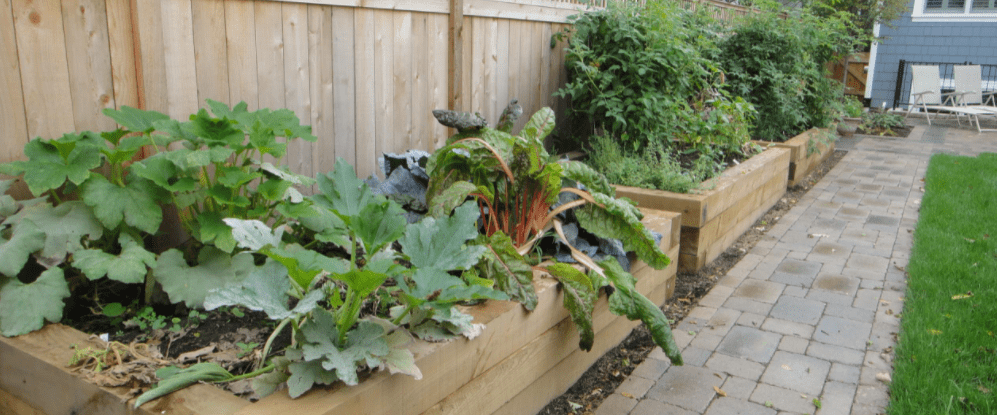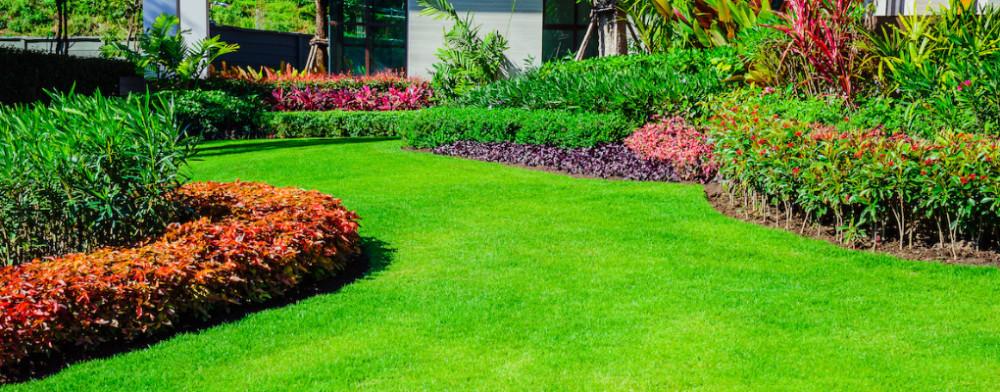What Is Xeriscaping?
When I first heard the word “xeriscaping” I thought it had something to do with hairstyles. And I wasn’t too far off…well at least it was on the same planet.
Xeriscaping is a way of landscaping or gardening that reduces or eliminates the need for irrigation. It is suitable for regions with limited or unreliable water supplies, such as dry or drought-prone areas. Xeriscaping can help you save water, money, and maintenance, as well as improve biodiversity and reduce pollution.
To use xeriscaping in your garden, you need to follow some basic principles, such as:
- Choose plants that are native or adapted to your climate and soil conditions. They will need less water and fertilizer than exotic or water-intensive plants. Some examples of drought-tolerant plants are cacti, myrtles, daffodils, and ocotillo.
- Group plants with similar water needs together. This will make it easier to irrigate them efficiently and avoid overwatering or underwatering.
- Use mulch to cover the soil around your plants. Mulch can help retain moisture, prevent weeds, moderate soil temperature, and add organic matter. You can use materials such as wood chips, bark, gravel, or rocks as mulch.
- Install efficient irrigation systems, such as drip or soaker hoses, that deliver water directly to the roots of your plants. Avoid sprinklers that waste water by evaporation and runoff. You can also use rain barrels or other methods to collect and reuse rainwater for your garden.
- Reduce the size of your lawn or replace it with other ground covers, such as low-growing shrubs, grasses, or wildflowers. Lawns require a lot of water and maintenance and often have low biodiversity and high chemical inputs. You can also use alternatives to grass, such as artificial turf, paving stones, or gravel.
The cost of xeriscaping depends on various factors, such as the size of your garden, the type and number of plants you choose, the materials and equipment you use, and the labor involved. Some initial costs may be higher than traditional landscaping, such as buying drought-tolerant plants or installing irrigation systems. However, you can save money in the long run by reducing your water bills, maintenance costs, and environmental impacts. You may also be eligible for rebates or incentives from your local water authority or government for xeriscaping your garden.
I hope this helps you understand what xeriscaping is and how you can use it in your garden. If you want to see some examples of xeriscaped gardens, you can check out these links: An example of Xeriscaping can be found at the Xeriscape Demonstration Garden at the headquarters of Denver Water in Denver..

Other Benefits of Xeriscaping.
- Reduced reliance on chemicals: Xeriscaping can help you avoid using pesticides, herbicides, and fertilizers that can harm the environment and your health. Native and drought-tolerant plants are more resistant to pests and diseases, and they can thrive in natural soil conditions without needing extra nutrients.
- Saving time: Xeriscaping can also save you a lot of time and effort in maintaining your garden. You don’t have to mow, trim, prune, or weed as often as you would with a conventional lawn or garden. You also don’t have to worry about watering, except for occasional deep watering during dry spells.
- Aesthetics and ethics: Xeriscaping can create a beautiful and diverse landscape that reflects your personal style and values. You can choose from a variety of plants, colors, textures, and shapes to create a unique and attractive garden. You can also support the local wildlife by providing them with food, shelter, and habitat. By xeriscaping, you are also contributing to the conservation of water and other natural resources, and reducing your ecological footprint.
- Versatility: Xeriscaping is not limited to dry or arid climates. You can use it in any region or zone, as long as you select the appropriate plants for your area. You can also mix xeriscaping with other types of landscaping, such as hardscaping, container gardening, or vegetable gardening. You can xeriscape your entire yard or just a part of it, depending on your preference and budget.
These are some of the benefits of xeriscaping that you may want to consider if you are thinking about changing your landscape. Xeriscaping can help you create a low-maintenance, water-efficient, and environmentally friendly garden that you can enjoy for years to come.
What Countries Are Best Suited For Xeriscaping?
Xeriscaping is a way of landscaping that reduces or eliminates the need for irrigation. It is suitable for regions with limited or unreliable water supplies, such as dry or drought-prone areas. However, xeriscaping is not limited to such climates. You can use it in any region or zone, as long as you select the appropriate plants for your area.
Some countries that are best suited for xeriscaping are:
- The United States: The western and southwestern parts of the US have embraced xeriscaping due to prolonged droughts and water scarcity. Cities like Denver, Las Vegas, Phoenix, and Los Angeles have supported xeriscaping by offering incentives and education to residents. You can see some examples of xeriscaped landscapes outside the United States Capitol in Washington, DC, and at the Xeriscape Demonstration Garden at the headquarters of Denver Water in Denver, Colorado.
- Australia: Australia is the driest inhabited continent on Earth, with most of its land area receiving less than 600 mm (24 in) of rainfall per year. Xeriscaping has been adopted by many Australians to cope with water restrictions and climate change. Native plants such as eucalyptus, acacia, banksia, and kangaroo paw are commonly used in xeriscaping, as they are adapted to harsh and variable conditions.
- South Africa: South Africa is another country that faces water shortages and droughts, especially in the Western Cape region. Xeriscaping has been promoted as a way to conserve water and create attractive gardens that reflect the local flora and fauna. Some of the popular plants for xeriscaping in South Africa are aloes, succulents, proteas, and fynbos.
- Spain: Spain is one of the driest countries in Europe, with an average annual rainfall of 650 mm (26 in). Xeriscaping is a common practice in Spain, especially in the Mediterranean regions where the climate is hot and dry. Mediterranean plants native to areas like Italy, France, Spain, and other parts of Europe add stunning interest to xeriscaped landscapes. Some examples are lavender, rosemary, thyme, sage, and olive trees.
These are some of the countries that are best suited for xeriscaping, but there are many more. Xeriscaping can be applied to any country or region that wants to save water, money, and maintenance, as well as improve biodiversity and reduce pollution. Xeriscaping can help you create a beautiful and sustainable garden that matches your climate and style.
Soil Preparation for Xeriscaping.
To prepare your soil for xeriscaping, you need to make sure that it can absorb and retain water efficiently, without being too dry or too wet. Depending on the type of soil you have, you may need to add some amendments to improve its texture and fertility. Here are some steps you can follow to prepare your soil for xeriscaping:
- Test your soil. You can use a simple kit to check the pH, nitrogen, phosphorus, and potassium levels of your soil. You can also send a sample to a laboratory for a more detailed analysis. This will help you determine what kind of plants are suitable for your soil and what amendments you need to add.
- Break up the soil. You can use a shovel, a hoe, or a tiller to loosen the top 6 to 12 inches of your soil. This will help improve the drainage and aeration of your soil and make it easier for the roots of your plants to grow.
- Add organic matter. You can use compost, manure, peat moss, or other organic materials to enrich your soil with nutrients and improve its water-holding capacity. Organic matter can also help balance the pH of your soil and make it more hospitable for beneficial microorganisms. You can mix about 2 to 4 inches of organic matter into your soil, or spread it on top as a mulch.
- Add sand or gravel. If your soil is mostly clay, you may want to add some coarse sand or gravel to improve its drainage and prevent waterlogging. Clay soil can hold too much water and become compacted, which can suffocate the roots of your plants and cause root rot. You can mix about 25% to 50% of sand or gravel into your clay soil, or create raised beds with a layer of sand or gravel at the bottom.
- Add lime or sulfur. If your soil is too acidic or too alkaline, you may want to adjust its pH by adding lime or sulfur. Lime can raise the pH of acidic soil and make it more alkaline, while sulfur can lower the pH of alkaline soil and make it more acidic. The ideal pH range for most plants is between 6.0 and 7.0, but some plants may prefer more extreme conditions. You can follow the instructions on the package of lime or sulfur to apply the correct amount to your soil.
These are some general steps you can take to prepare your soil for xeriscaping. However, you may need to modify them depending on the specific conditions of your site and the plants you choose. You can also consult with a local nursery or extension service for more advice on xeriscaping in your area.
How to Choose The Right Plants?
Choosing the right plants for your xeriscape garden is an important step to creating a beautiful and water-efficient landscape. There are many factors to consider, such as your climate, soil type, sun exposure, and personal preference. Here are some tips to help you choose the best plants for your xeriscape garden:
- Select plants that have adapted to low-water environments. These plants are drought-tolerant and can survive with little or no irrigation once established. They have features such as deep roots, thick leaves, waxy coatings, or spines that help them conserve water and cope with dry conditions. Some examples of low-water plants are cacti, succulents, lavender, rosemary, sage, and thyme.
- Plant native plants. Plants that are indigenous to your area are already acclimated to the local weather extremes, making them a smart choice for xeriscaping. Native plants also support the local wildlife by providing them with food, shelter, and habitat. You can find out what plants are native to your region by visiting a local nursery or extension service or using online resources such as Native Plant Finder or Plant Native.
- Group plants with similar water needs together. This will make it easier to irrigate them efficiently and avoid overwatering or underwatering. You can use a zoning system to divide your garden into different areas based on their water requirements. For example, you can have zone 1 with high-water plants that need frequent watering, zone 2 with medium-water plants that need occasional watering, and zone 3 with low-water plants that need rare or no watering.
- Choose plants that match your sun exposure and soil type. Different plants have different preferences for light and soil conditions. Some plants need full sun to thrive, while others prefer partial shade or shade. Some plants can tolerate poor or rocky soil, while others need rich or loamy soil. You can test your soil to check its pH, texture, and fertility, and then choose plants that are suitable for your soil type. You can also amend your soil by adding organic matter, sand, gravel, lime, or sulfur to improve its drainage, water-holding capacity, pH, or nutrient level.
- Choose plants that suit your style and taste. Xeriscaping does not mean you have to sacrifice aesthetics for functionality. You can create a stunning xeriscape garden that reflects your personal style and taste by choosing plants that have different colors, textures, shapes, and sizes. You can also mix xeriscaping with other types of landscaping, such as hardscaping, container gardening, or vegetable gardening. You can use rocks, pebbles, gravel, flagstones, or paving stones to create interesting patterns and contrasts with your plants. You can also use pots, barrels, buckets, or other containers to grow plants that need more water or soil than your xeriscape garden can provide.
These are some of the tips to help you choose the right plants for your xeriscape garden. I hope this information enables you to create a low-maintenance, water-efficient, and environmentally friendly garden that you can enjoy for years to come!
Final Thought on Xeriscaping.
Xeriscaping is not only a way to create a beautiful and diverse landscape, but also a way to conserve water and save money. By choosing plants that are native or adapted to the local climate and soil, grouping them by their water needs, and using efficient irrigation systems, xeriscaping can reduce water use by 50 or 75 percent compared to traditional landscaping.
This can make a significant difference in areas that face water shortages or droughts. For example, in Novato, California, residents who switched to xeriscaping received reductions in their water bills as an incentive from the city’s water department. The department estimated that each xeriscaped house saved 120 gallons of water per day. Xeriscaping is a smart and sustainable choice for anyone who wants to create a low-maintenance, water-efficient, and environmentally friendly garden.
N.B. Please read my other blog on Xeriscaping, “Xeriscape Garden Ideas” which includes a video, “Xeriscape Like a Pro”
Some links on this site may be affiliate links, and if you purchase something through these links, I will make a commission on them. There will be no extra cost to you and, you could actually save money. Read our full affiliate disclosure here.





